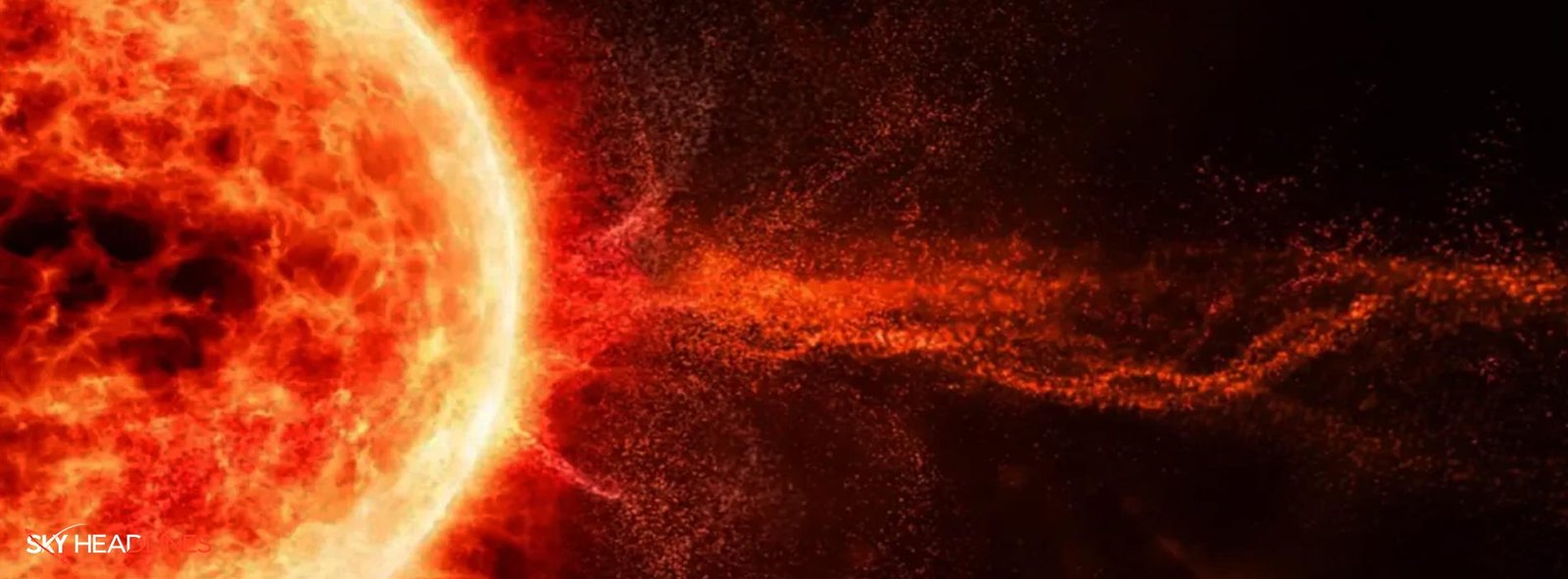Sun Storms and Life’s Origins: A new study proposes that early building blocks of life on Earth could have resulted from solar eruptions.
Amino acids and carboxylic acids, the building blocks of proteins and organic life on Earth, can be formed when solar particles collide with gases in the early Earth’s atmosphere, as demonstrated by a series of chemical studies. The research results were printed in the journal Life.
Many researchers have spent time trying to deduce the processes that gave rise to amino acids, the building blocks of proteins and all cellular life. In the late 1800s, scientists proposed the idea that life may have begun in a “warm little pond”—a soup of chemicals that, when electrified by lightning, heat, or other energy sources, could mix in concentrated numbers to form organic molecules.
Now most of us often ask:
How did Stanley Miller attempt to simulate the conditions for the origin of life on Earth in the lab back in 1953?
The University of Chicago’s Stanley Miller attempted to simulate these early conditions in the lab back in 1953. Miller simulated lightning by repeatedly lighting an electrical spark within a sealed container filled with substances estimated to have been common in Earth’s early atmosphere, such as methane, ammonia, water, and molecular hydrogen. After a week of observation, Miller and his graduate advisor Harold Urey detected 20 unique amino acids in the chamber’s contents.
Now, let’s discuss,
What is the new theory proposed by Vladimir Airapetian regarding the origin of life on Earth?
“That was a big revelation,” said Vladimir Airapetian, a stellar astrophysicist at NASA’s Goddard Space Flight Center in Greenbelt, Maryland, and co-author of the new research. These complex organic molecules can be synthesized from the simple elements that made up the early Earth’s atmosphere.
This understanding, however, has become more nuanced during the past 70 years. Current scientific consensus holds that more difficult-to-break-down gases like carbon dioxide (CO2) and molecular nitrogen (N2) dominate Earth’s atmosphere. Even at very low yields, these gases are still capable of producing amino acids.
Some researchers have suggested using the impact waves from meteors as a source of renewable energy. UV light from the sun has been mentioned by others. Using information gathered by NASA’s Kepler mission, Airapetian proposed a new theory: solar energetic particles.
Moreover, we should also know that,
Kepler’s Observations and Sun’s Origins
Kepler’s observations of distant stars at various ages reveal clues regarding the Sun’s origins. In 2016, Airapetian published a study indicating that the Sun was roughly 30% fainter during Earth’s first 100 million years. However, “superflares” from the sun, which are extremely powerful eruptions and occur only once every 100 years or so now, would have occurred every 3-10 days.
Superflares and Chemical Reactions
The near-light speed particles emitted by these superflares would frequently impact Earth’s atmosphere, setting off chemical reactions.
Collaboration with Yokohama National University
“As soon as I published that paper, the team from the Yokohama National University from Japan contacted me,” Airapetian explained. Dr. Kobayashi, a chemistry professor there, specialized in prebiotic chemistry for 30 years.
Galactic Cosmic Rays and Early Earth’s Atmosphere
He was pondering the possibility that galactic cosmic rays, or particles from beyond our solar system, affected the atmosphere of early Earth. Because of the need for specialized equipment like particle accelerators, “most investigators ignore galactic cosmic rays,” Kobayashi added.
Recreating Early Earth’s Atmosphere
The early Earth’s atmosphere has been recreated by Airapetian, Kobayashi, and their colleagues. They mixed in some methane along with carbon dioxide, molecular nitrogen, water, and water vapor. (It is unclear how much methane was present in the Earth’s early atmosphere, but it is likely to have been rather low.)
Comparing Protons and Spark Discharges
To make a direct comparison with the Miller-Urey experiment, they shot gas mixtures with protons (representing solar particles) or burned them with spark discharges (representing lightning).
Now, let’s find out,
What is the difference between the production of amino acids by lightning and solar particles?
Amino acids and carboxylic acids were created in noticeable levels by mixes fired by protons (solar particles) as long as the methane proportion was greater than 0.5%. However, amino acids couldn’t form until the methane concentration reached about 15% due to the spark discharges (lightning).
Solar Particles vs. Lightning
“And even at 15% methane, the production rate of the amino acids by lightning is a million times less than by protons,” Airapetian said. More carboxylic acids (a precursor of amino acids) were created when protons were used as an igniting source, as opposed to when spark discharges were used.
The Role of Early Earth’s Environment
If everything else is equal, solar particles seem like a better energy source than lightning. Airapetian speculated that not everything was equal, though. Miller and Urey imagined lightning was as common in the era of the “warm little pond” as it is now. Thunderclouds, which produce lightning, would have been less common if the Sun had been 30% weaker.

Early Earth’s Weak Sun and Freezing Temperatures
Airapetian explained that early Earth was plagued by a weak Sun and freezing temperatures, ruling out the possibility of lightning. Not to rule out the possibility of lightning as a source, but solar particles suddenly seem more likely. These studies imply that the prebiotic chemistry needed for life may have been catalyzed by our active young Sun with more ease and maybe at an earlier time than was previously thought.





